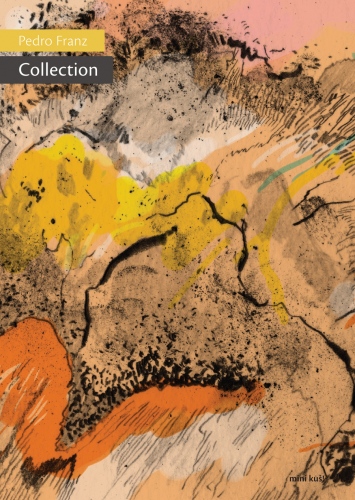Quick Picks is an occasionally written series of microreviews of books I’ve read over the past two weeks. The latest batch of mini kuš comics came in the mail earlier this week, and as always it’s an interesting set.
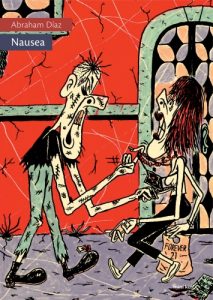
mini kuš #63 – Nausea by Abraham Díaz
The first, most noticable quality of Díaz’s comic is how messy it looks. Ink smears and thick hatching are matched up against messy characters and backgrounds. The whole comic looks dirty, and it seems like that is Díaz’s intent, showing readers a version of Mexico City that is violent and miserable. This nihilistic view of the city could be exported to any major metropolis, but it seems that Díaz is intent on pointing out how senseless the situation seems. The ending of each of the interconnected short stories contained in Nausea is often confusing and ghastly. Díaz differentiates between the storylines using dense colors. The only ending that makes sense is that of a pair of teenagers? who rob a convenience store. Still, when all of the colors converge, a small cityscape panel in the middle of the book, it’s hard not to find that specific image beautiful. And I think that convergence (which is pictured again on the back cover of the book) betrays as much, if not more, about Díaz’s relationship with Mexico City as the gruesome short stories that make up Nausea. It’s a compelling mix.
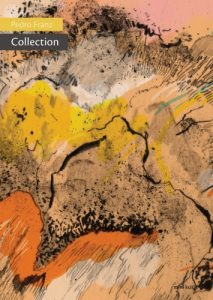
mini kuš #64 – Collection by Pedro Franz
Pedro Franz is a new name for me, but I’m excited by Collection, and happy to look for more of his work moving forward. While it’s tempting to think about Collection in terms of its longest section (a reminiscing over child- and young adulthood injuries), I found the comic to work more along the lines of comics poetry. Built out of six individual stanzas, Collection interrogates the human desire to catalog things, whether those are photographs, books, memories, or scars. Throughout, Franz’s illustration is somehow both delicate and gestural, a messy collection of smears and warbling ink. Of the four books in this latest set of minis, Collection is the hardest to parse, and also my favorite of the set. Your mileage may vary.
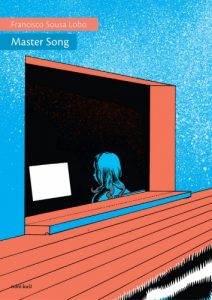
mini kuš #65 – Master Song by Francisco Sousa Lobo
I recently reviewed another book by Sousa Lobo and wasn’t expecting to see more of his work so soon. In spite of my previous misgivings, Master Song is a remarkably solid and complex character study. Sousa Lobo uses a strict formal paneling to give the book structure, and then amplifies that structure with a rhyming narration. The rhymes are the thoughts of the main character Emily, who is, for lack of a better description, loathsome and pitiful. She is an antisemite, but nannies for two Jewish children; she is into BDSM because of an obsession with 50 Shades of Gray, but doesn’t know how to get into a sub/dom relationship. She keeps hooking up with guys in bars hoping to find someone who can correctly intuit her desires, but never finds any success. The power of these contradictions, and Sousa Lobo’s pairing them with a singsong that’s reminiscent of elementary school poetry, convicts Emily as much as it makes her human. Not identifiable, not sympathetic, but wholly human.
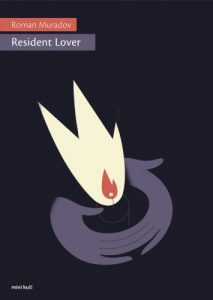
mini kuš #66 – Resident Lover by Roman Muradov
Muradov’s previous major work with kuš was a remarkable triumph of a comic, and my initial impression of Resident Lover, his latest work, is also quite positive. The book is a reinvention of Muradov’s illustration, and while it’s clear that Muradov is the artist who made the book, it eschews grainy textures and tactile graphites of previous work. Clean block colors and a loopy, delicate line predominate in a story that’s as much about a vision of intimacy as it is about the difficulties of human connection. In Resident Lover, Muradov’s main character gets into an argument on a trip with their lover, leading to an exodus into a natural wilderness as well as a manmade one. Unlike Muradov’s previous work, in Resident Lover I see the influence of manga master Seiichi Hayashi. There’s a somberness and a delicacy to Resident Lover that I distinctly link to Hayashi’s work. But Resident Lover also seems to avoid being locked down in that somberness – it’s also quite playful, using geometric shapes and cutouts to make character and motion. Like Muradov’s previous work, Resident Lover is a visual feast that defies easy interrogation.
Sequential State is made possible in part by user subscriptions; you subscribe to the site on Patreon for as little as a dollar a month, and in return, you get additional content; it’s that simple. Your support helps pay cartoonists for illustration work, and helps keep Sequential State independent and ad-free. And if you’re not into monthly subscriptions, you can also now donate to the site on Ko-Fi.com. Thanks!

